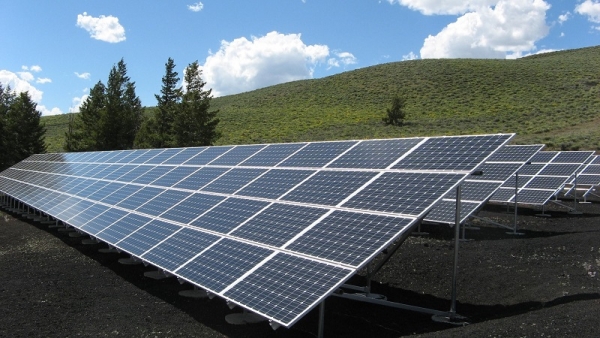Measuring solar radiation is costly, as are all the tasks related to the maintenance and calibration of the most commonly used sensors: pyranometers and radiometers. The result is a paucity of reliable data. Hence, a research group from the University of Córdoba has developed and evaluated several Machine Learning models to predict solar radiation in nine locations (southern Spain and North Carolina, USA) spanning a range of different geo-climatic conditions (aridity, distance to the sea, and elevation). The work has been featured in the journal Applied Energy.
One of the main breakthroughs of the models they created is that they only need thermal data to estimate daily solar radiation. "Measuring and having air temperature data today, thanks to low-cost sensorizationand IoT (Internet of Things) technologies, is quite affordable," added Javier EstévezGualda, a researcher and professor at the UCO. Most of the existing meteorological stations around the world have thermal and rainfall sensors, but very few measure solar radiation.
Juan Antonio Bellido, the main author of the work, highlights that one of the problems that currently exist in models based on Artificial Intelligence is the configuration of internal parameters, termed hyperparameters. "We might compare these hyperparameters to the controls on a sound technician's mixing board; their adjustment is essential, as the modification of potentiometers must be constantly prevented from causing sound problems," he explains. To solve this problem, they used an automatic algorithm called Bayesian Optimization (based on Bayes’ theory), which is responsible for efficiently and quickly searching for suitable parameters so that the models obtain efficient and accurate results.
All the models used can be classified as supervised models; that is, they require data training. However, they can be classified into several groups: models based on neural networks, whose functioning is similar to that of neurons (Multilayer Perceptron - MLP, Extreme Learning Machine - ELM - and Generalized Regression Neural Networks - GRNN); models based on a tree typology (Random Forest - RF - and Extreme Gradient Boost - XGBoost), and others, such as Support Vector Machine (SVM).
These have been tested in different arid conditions, such as southern Spain, and in North Carolina (USA); that is, in arid, semi-arid, sub-humid, dry and humid areas. 31% of the earth's surface is arid/semi-arid/dry sub-humid, while 67% is humid. In this way, they are applicable to the entire surface of the Earth. When evaluating the efficiency of the models trained in new locations whose data has not been used during the same, significant improvements are yielded in all the locations. For example, those trained with time series from Cabra (Córdoba) and then applied in El Campillo (Huelva) show a considerable improvement.
Professor and researcher Amanda P. García-Marín, who is also part of the team, stated that the results improve on current models, obtaining great precision in estimating daily solar radiation values. "This is crucial in locations with no available or missing/low-quality data sets, and can be used to optimize the determination of potential locations for the construction of solar power plants," concluded researcher Javier EstévezGualda.
Another of the work's strengths is that the models are available to any researcher,via the free-access GitHub repository, so their use can be extended to any area of the planet, depending on its aridity. In addition, from the agronomic point of view, the precise estimation of solar radiation is vital, since it is a key variable in the development of crops.
This study is part of the Smarity project (AGL2017-87658-R), funded by the Ministry of Science's Social Challenges National R&D Plan, which seeks solutions to climatic aridity in southern Spain and to intelligently predict the spatio-temporal variability of aridity and its effects on agriculture and the environment.
Reference
Bellido-Jiménez, J. A., EstévezGualda, J., Penélope García-Marín, A. (2021). Assessing new intra-daily temperature-based machine learning models to outperform solar radiation predictions in different conditions. Applied Energy, Vol. 298. DOI: https://doi.org/10.1016/j.apenergy.2021.117211


